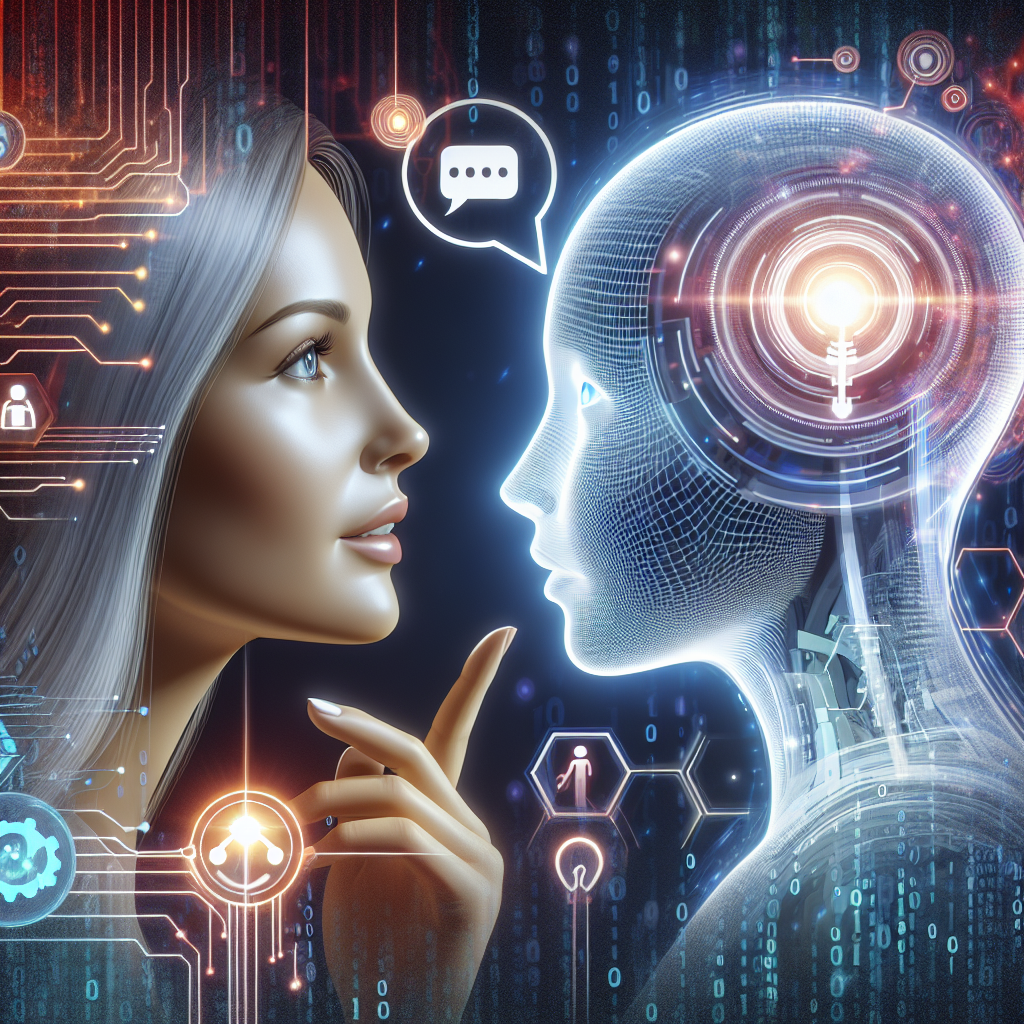One year after the release of ChatGPT, there still remains a cloud of uncertainty surrounding Washington's regulatory approach to AI. With Sam Altman, the CEO of OpenAI, the company behind ChatGPT, being fired and then rehired with a new board of directors, it has only added to the intrigue. The AI community is split between those advocating for a slower, safer AI development approach and those who champion expansion and innovation. President Joe Biden's executive order on AI safety attempts to strike a balance between safety and innovation. Democratic lawmakers are pushing for stronger legal guardrails and reporting requirements to address concerns ranging from content biases to harmful data collection and the spread of misinformation. However, tech companies argue for fewer regulations to maintain their competitiveness on the global stage. As experts and panelists gather to discuss the impact of ChatGPT on society and the lessons learned from its first year, the future of AI-driven language models hangs in the balance.

Sam Altman's firing and rehiring
One of the major developments in the AI community was the firing and subsequent rehiring of Sam Altman, the CEO of OpenAI, the company behind ChatGPT. This unexpected turn of events took place amidst concerns and debates surrounding the use and regulation of AI technologies. Initially, Altman's firing raised questions about the future of OpenAI and the direction it would take without its original leader. However, Altman was later rehired with a new board of directors, signaling a renewed commitment to advancing the company's mission. This episode served as a reminder of the dynamic nature of the AI landscape and the challenges that arise in navigating its complexities.
Debate between slower, safer AI development and expansion/innovation
Within the AI community, there exists an ongoing debate between those advocating for a slower, safer approach to AI development and those pushing for rapid expansion and innovation. The former group emphasizes the need for thorough safety protocols and ethical considerations before advancing AI technologies further. They argue that a cautious approach is essential to avoid potential risks and unintended consequences associated with the misuse of AI. On the other hand, proponents of expansion and innovation argue that overly strict regulations may stifle progress and hinder competitiveness, potentially hampering the benefits AI can bring to society. Striking the right balance between safety and innovation remains a topic of intense discussion and negotiation within the field.
President Joe Biden's executive order on AI safety
Recognizing the significance of AI in shaping the future, President Joe Biden issued an executive order focusing on AI safety. The order aims to establish measures that promote both safety and innovation in the development and deployment of AI technologies. Under this executive order, the government will take steps to enhance the safety and ethical considerations in AI applications while ensuring that regulatory measures do not impede technological advancement. This balanced approach acknowledges the importance of safeguarding against potential risks while fostering an environment conducive to AI innovation.
Measures for safety
The executive order calls for the implementation of safety measures in AI technologies. This includes conducting thorough risk assessments and ensuring the ethical use of AI systems. By prioritizing safety, the government aims to mitigate any potential harm that could arise from the misuse or unintended consequences of AI. The order also encourages collaboration between government agencies, academia, and industry experts to develop best practices and guidelines for ensuring the safety of AI systems.
Measures for innovation
While emphasizing safety, President Biden's executive order also emphasizes the importance of innovation in AI development. The order calls for the establishment of regulatory policies that do not unduly impede the advancement and competitiveness of AI technologies. By striking a balance between safety and innovation, the government aims to support the development of AI applications with the potential to drive economic growth, improve public services, and enhance societal well-being.

Democratic lawmakers' push for stronger legal guardrails
In response to the rapid advancement of AI technologies, some Democratic lawmakers have been pushing for stronger legal guardrails to mitigate potential risks and protect individuals' rights. These lawmakers argue that existing legal frameworks are inadequate for dealing with the unique challenges posed by AI. They seek to introduce new legislation that sets clear guidelines and obligations for companies using AI systems, ultimately ensuring transparency and accountability.
Legal requirements for companies using AI
To address concerns related to the use of AI, Democratic lawmakers propose the establishment of legal requirements for companies utilizing AI systems. These requirements would outline guidelines for the collection and use of data, algorithmic transparency, and accountability for any potential biases or harmful outcomes resulting from AI applications. By imposing clear legal obligations, lawmakers aim to create a framework that protects individuals' rights and ensures responsible AI development and deployment.
Reporting requirements
In addition to legal requirements, Democratic lawmakers also advocate for reporting obligations from companies using AI systems. This would involve regular reporting on the algorithms, data sources, and potential biases associated with their AI technologies. By promoting transparency and public disclosure, lawmakers aim to foster trust between consumers, companies, and the government regarding the use of AI and its impact on individuals and society.
Concerns surrounding AI
As AI technologies continue to evolve and become more integrated into various aspects of our lives, there are growing concerns about the potential risks and negative consequences associated with their use. Some of the main concerns revolve around content biases, harmful data collection practices, and the spread of misinformation.
Content biases
AI systems, including language models like ChatGPT, are not immune to biases that exist in the data they are trained on. These biases can result in AI systems generating or reinforcing stereotypes, perpetuating discrimination, and amplifying societal biases. Efforts are underway to address this challenge by devising techniques to mitigate biases in AI models and ensuring fairness and inclusivity in their outputs.
Harmful data collection
The collection and use of personal data by AI systems raise concerns about privacy and potential misuse. Data collection practices that infringe on individual privacy rights or exploit sensitive personal information can have far-reaching consequences. Legislation and regulations are required to ensure responsible data collection, usage, and protection, minimizing potential harms and safeguarding individuals' privacy rights.
Spread of misinformation
The proliferation of AI-generated content also brings about concerns regarding the spread of misinformation. AI systems, if not properly regulated and monitored, can be manipulated to spread false or misleading information, posing significant challenges to democratic processes, public trust, and societal well-being. Stricter regulations and effective oversight mechanisms are necessary to address the issue of misinformation and protect the integrity of public discourse.
Tech companies' argument for fewer regulations on AI
In contrast to lawmakers advocating for stronger regulations, some tech companies argue for fewer regulations on AI to maintain international competitiveness. These companies assert that overly burdensome regulations could hinder innovation and impede their ability to compete on a global scale. They argue that a more flexible regulatory environment allows for experimentation, faster development, and the ability to seize opportunities in the rapidly evolving AI landscape. Balancing the need for regulation with the imperative for innovation remains a topic of contention between lawmakers and industry stakeholders.
Maintaining international competitiveness
Tech companies argue that excessive regulations could put them at a disadvantage in the global market. They contend that a more permissive regulatory environment allows for greater agility and adaptability to emerging market demands. By maintaining international competitiveness, these companies can continue to drive economic growth, foster innovation, and contribute to societal progress. Finding the right balance between regulation and maintaining a competitive edge is crucial to ensure a thriving AI ecosystem that benefits both businesses and society as a whole.
Impact of ChatGPT on society
One year after the release of ChatGPT, the AI community continues to examine and discuss its impact on society. ChatGPT, a language model designed to engage in conversation with users, has demonstrated both its potential and limitations. Its ability to generate human-like responses has sparked excitement and interest in various applications, from customer service to content creation. However, concerns surrounding biases, information reliability, and ethical implications have also been raised.
ChatGPT's impact on society extends beyond its potential commercial applications. The model has facilitated greater access to information and knowledge sharing, enabling users to engage in meaningful conversations and seek assistance across a wide range of topics. However, it is crucial to address and mitigate the risks associated with the use of AI language models to ensure that the benefits are maximized and the potential harms are minimized.
Lessons learned from the first year of ChatGPT
The first year since ChatGPT's release has provided valuable insights and lessons for the AI community. OpenAI and other researchers have actively solicited user feedback and iteratively improved the model to address its limitations. This iterative process has helped uncover challenges related to biases, misinformation, and the potential misuse of AI. By actively engaging with users, researchers, and stakeholders, OpenAI has demonstrated a commitment to learning from the initial deployment of ChatGPT and continuously improving the technology.
The lessons learned from the first year will inform the future development and deployment of AI language models like ChatGPT. These lessons include the importance of robust and diverse training data, the need for ethical guidelines and safeguards, and the responsibility of AI developers to address biases and promote transparency. The ongoing collaboration between AI practitioners, researchers, and the wider community will be crucial in shaping the future of AI-driven language models.
Expertise and insight on the future of AI-driven language models
To gain a better understanding of the future of AI-driven language models like ChatGPT, a panel of experts will provide their expertise and insights. These experts will explore topics such as the impact of AI on various sectors, the ethical considerations surrounding AI language models, and the potential pathways for responsible and beneficial AI development. This discussion will shed light on the challenges and opportunities that lie ahead, helping to shape policies, regulations, and best practices for AI-driven language models in the years to come.
As society grapples with the rapid advancement of AI, it is essential to foster meaningful discussions that include diverse perspectives and encourage collaboration between different stakeholders. By engaging in open dialogue and informed debate, we can collectively navigate the complex landscape of AI technologies, ensuring that they are developed, deployed, and regulated in a manner that maximizes their benefits while safeguarding against potential risks.


